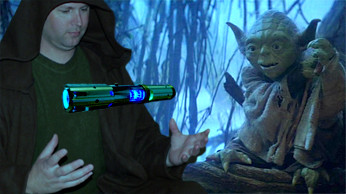Let me start by saying I am a complete novice as regards electronics in general, let alone saberbuilding. I want to start small, as the tutorials suggest, and the best way I thought to do that was to begin with wiring an LED and power source. The trouble I encounter is that the mishmash of numbers and equations I see is both frustrating and confusing; especially since the only answer I truly want is which BuckPuck or resistor to attach to any given LED.
I knew that beginning with the RGBW that I immediately wanted as soon as I saw it was probably a bad idea, given that it is inherrently more complex than wiring a simple, single-color LED, so I have set that goal aside for later. The initial stages of my trek into the land of lightsaber building must begin with the ins and outs of voltage, current, resistor values, etc. Simply put, I want to know what will and will not fry the diodes I've purchased.
Let us say that I've settled on the LED Engin 10W Green. I read the data sheet and was not totally confused (although close to it) by the jargon it held. What mattered most to me was the "Absolute Maximum Ratings" list near the end. On that list it is hinted that the LED cannot receive more than 1,000mA of current, but it is not directly stated (at least, not in language I'm familiar with). If my estimations and research are correct, selecting a 1,000mA resistor (or BuckPuck) will regulate the output of current to 1,000mA with a minimum input voltage of 5v and a maximum of 32v.
If this is correct, then it stands to reason that I could wire up, say...two lithium ion batteries (7.4v?) to the 1,000mA BuckPuck and power the LED with exactly what it needs without frying it. If this is not correct, I need to start over from the beginning and reread everything I've read in the past two weeks.
Assuming the prior solution is correct, I would like to attempt to convert a storebought flashlight (2D Maglite) into a lithium ion LED Engin 10W White. That is the goal of my first attempt to learn this skill. Everything I've read says it should work, but I'm cautious about taking the plunge.
I know the knee-jerk reaction of veteran electronics geniuses is "Do your research", but I have done. I still have questions and concerns. I don't want to do this incorrectly.





 Reply With Quote
Reply With Quote







Bookmarks